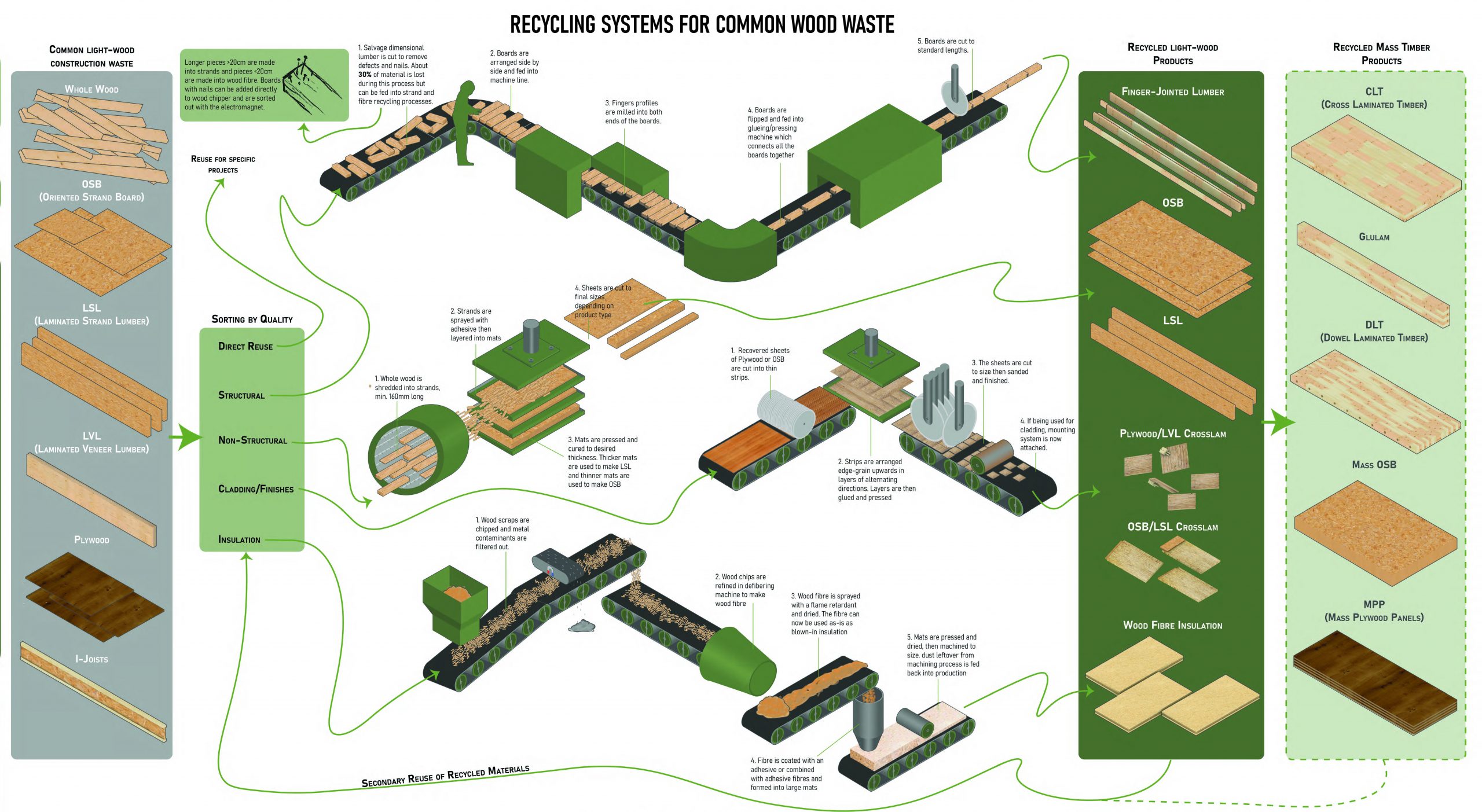In order to effectively recycle and reuse wood, there needs to be established recycling pathways that allow wood to be recirculated into the construction industry rather than downcycled for energy production or biomass. This thinking lead to the development of several recycling processes that could transform salvaged wood into new, valuable products. The most common types of wood waste are dimensional
lumber, structural sheathing such as OSB and plywood, and engineered beams such as laminated strand lumber (LSL) and laminated veneer lumber (LVL). Salvaged wood comes in a variety of qualities with ranges of sizes, moisture content, number of contaminants such as nails, dirt and paint, and presence of defects such as holes, splits, and breakage. As such the recycling methods developed must account for the variety in quality. Four recycled materials are presented in this section including finger-jointed lumber, crosslam tiles, OSB and LSL, and wood fibre insulation. Finger-jointed lumber, crosslam tiles, and wood fibre insulation are presented in greater detail in later sections. We found the productions of OSB and LSL from salvaged wood was non viable to pursue at this stage of research.
The diagram below shows the complete cycle of salvaged wood through each of the four recycling processes, as well as how those new products are recycled once again at the end of their usable life through these same recyclers. Unlike most life cycle analyses for building materials, this collection of recyclers allows for materials to retain value across multiple generations of buildings. Each material can be recycled either within its own recycling system (such as wood fibre insulation or finger-joint lumber), or it can be recycled within one of the other recycling systems; for example, all materials can be recycled within the wood fibre insulation track.
The diagram also demonstrates how further value may be added by using the base products for mass timber applications or in pre-fabricated construction.
